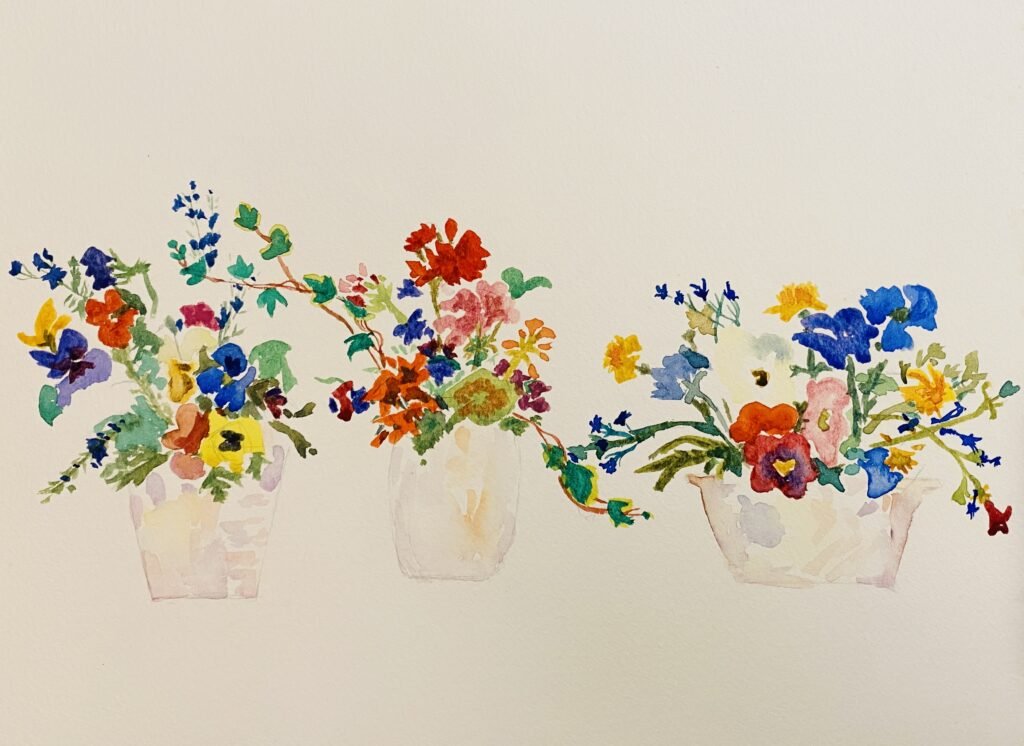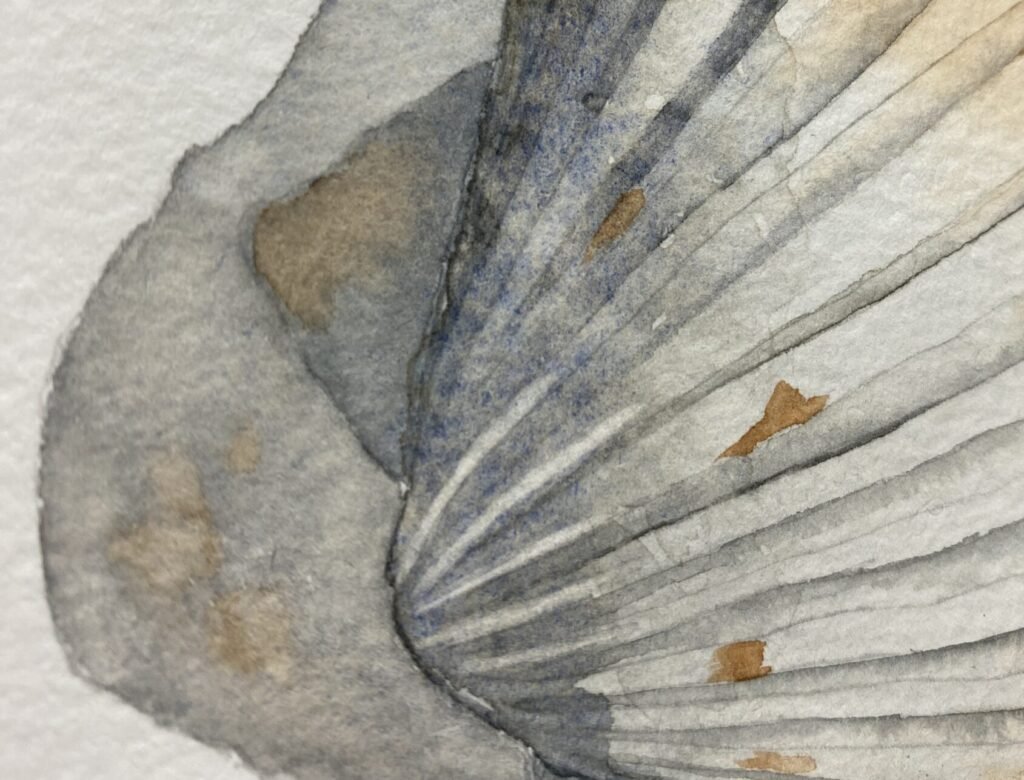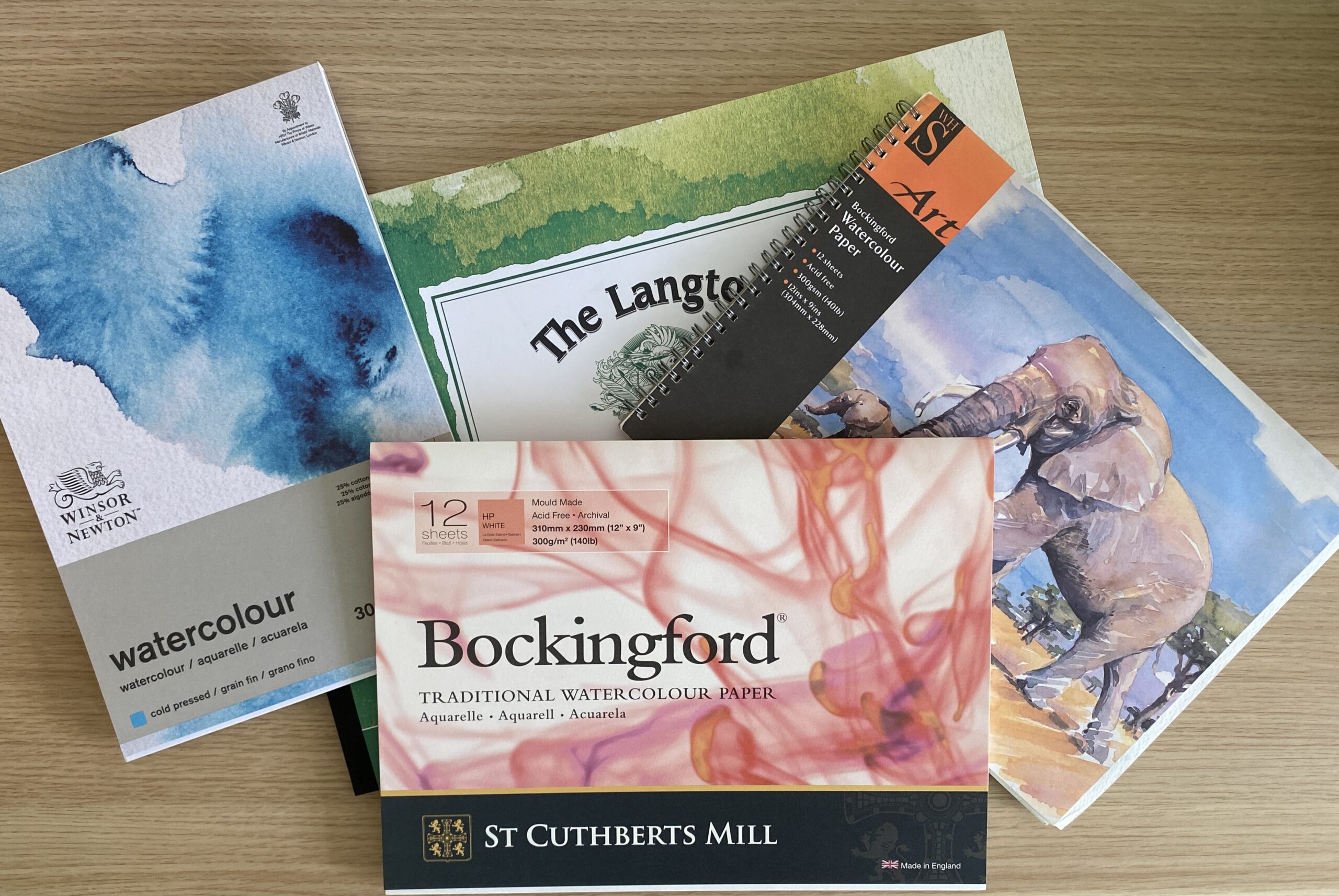In search of a Decent Watercolour Paper
I always get excited at the prospect of trying new art materials. Anticipating in my mind the effects I can create with the newly acquired goods, the look and feel of them, and the hope of improving my art fills me with a great sense of thrill.
I have again set out to buy something I can physically see and touch in the shop. My nearest local art store is Hobbycraft and I must say that even before this trip I rarely walked away satisfied. This time was no exception. I don’t know what it is, perhaps just they aren’t storing a wide range of products specifically for the serious artist.
But because they do have some Winsor & Newton and Daler Rowney products which are relatively reliable, I decided to have another browse.
After a lot of umming and ahhing, I picked up a pad of Langton Mould Made 300gsm A3 watercolour paper, which I slightly regretted later. Here’s why.


Watercolour paper dilemmas
It must be a familiar experience to most artists, that after a few months of painting, the hunt starts in earnest for that ideal watercolour paper. Specifically, my goal is to find a paper that is both durable and value for money, since not all paintings are going to be framed.
And it’s easy to fall into the trap of buying inferior materials at the beginning of our artistic journey, because, well, we’re only practising and they should be good enough. But the reality of this way of thinking soon becomes apparent, when time after time our efforts of trying to produce anything worthy of even showing to our cat, fail miserably.
However, this wasn’t always the case. I’m becoming increasingly frustrated as it seems like manufacturers have lowered their standards over the years. A brand that once could be relied upon, has become a poorer version of itself.
How does a good watercolour paper help
Many expert artists believe that watercolour paper is the most important part of a successful project. Certainly, it helps with creating beautifully luminous artwork and makes the painting process effortless.
I have noticed a remarkable difference between the various grades of paper. The most obvious is that I’m able to produce better results on higher quality paper.
The advantages of 100% cotton paper:
- Due to superior absorption, it can take higher quantities of water
- It has the ability to handle more layers
- With its acid-free surface, the paper won’t discolour over time
- Because of its robustness, a variety of techniques can be applied such as lifting out
- The colours blend easily
- The paintings just look more aesthetic.
The reason why 100% cotton paper is so much better quality comes down to the materials it’s made from and the manufacturing process. As its name suggests 100% cotton watercolour paper is produced from cotton fibres and is usually made by hand, or can be mould-made which is more automated.
Whereas student grade paper is made out of cellulose and wood pulp and is entirely machine produced.
My previous experience
I have been painting on and off for a while now and up until recently I didn’t have to buy paper, because I still had some left from before.
I must’ve been very lucky as a beginner to purchase pads of paper that were brilliant value and also produced decent results. Even though my technique was lacking, I could not complain about the quality of the watercolour paper I was using. The very first paper I tried was WH Smith’s 300gsm cold pressed paper, then later I was given various Langton papers that I was pleased with.


Unfortunately, some of the stored paper has become ruined over the years because of damage to the coating. This resulted in the paper not taking the water as it should, sinking into the paper, making it unusable. That was a good lesson however on storing materials correctly!
When I discovered this, my experimentation with watercolour papers had begun.
Old faithfuls no more
So I reached back to what has worked before and among others, I purchased some WH Smith and Langton watercolours papers. On both occasions I felt rather let down. Not only the branding changed but the quality of these papers were a huge disappointment to me.
Especially the Langton one, I found it a real struggle to work with. I had to re-wet the surface constantly as the water dried almost immediately after putting it on.
The other issue was that the pigments weren’t blending properly and I was unable to add too many layers since the previous paint lifted too easily. This made the painting process extremely laborious and time consuming!


What about reviews
Of course I do look at reviews on Amazon and Google for instance. The Winsor & Newton 25% cotton paper had glowing reviews, so I had high hopes for that one. Alas, I didn’t think it was anything special. Yes, it is probably better than most of the wood pulp papers but I honestly expected more.
It can be quite difficult to draw conclusions from reviews, since we all have different criteria we look for. I’m also aware that some users have affiliations with certain companies and more likely to gloss over weaknesses in their assessments.
And so the search goes on
Although I have found the best watercolour paper I believe I can get locally, I’d still like to practise on something that comes close in quality. The Langton Prestige cotton paper is easy to use and very forgiving, but I don’t always make pieces that will end up in a frame.
It seems that there were such papers produced in the past, but quality by manufacturers has been compromised.
It is so frustrating that I still haven’t found that elusive paper, and it seems like it’s going to be a lot of trial and error!

